SaaS Integration: Definition, Benefits, and Challenges
Updated June 13, 2024
Published July 14, 2023
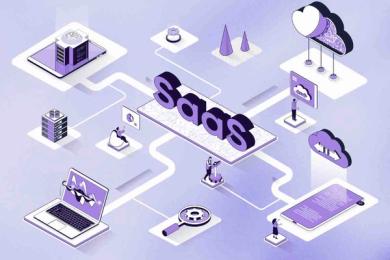
Are you wasting time moving data between apps? Do disconnected systems limit your business? SaaS integration can help. It lets your cloud apps share data automatically. This removes manual work, saving you time and reducing mistakes.
With SaaS integration, your apps communicate smoothly. This gives you better insights and capabilities to grow your business. You can be more productive, efficient, and competitive. SaaS integration is key to connecting the apps your business relies on. It lays the foundation for success in the digital world.
What is SaaS Integration?
SaaS stands for Software as a Service. SaaS integration involves connecting different SaaS-based applications and allowing them to share data and communicate with each other.
For example, a company may use separate SaaS applications for email, document storage, accounting, customer management, and enterprise resource planning (ERP). SaaS integration would allow these different systems to transfer data and work together seamlessly.
Companies ensure smooth operations by integrating SaaS software with varied applications and platforms. For example, HubSpot, a popular customer relationship management (CRM) platform, supports integrations with over 1,000 third-party SaaS applications.

According to Statista, global businesses used an average of 130 SaaS applications. It isn’t surprising that the SaaS industry is worth more than $195 billion. SaaS integrations play an important role in connecting different software tools companies use.
SaaS integration solutions remove silos between different software systems. This improves efficiency, and accuracy, and provides deeper business insights. Companies can choose to handle integrations in-house or use an integration platform service (iPaaS) to simplify the process.
SaaS Integration vs. App Integration vs. API Integration
SaaS integration, app integration, and API integration sounds like different concepts. However, developers use it to refer to the same thing. All of these processes can be referred to as “Integration”.
APIs, or Application Programming Interfaces, is a method used to connect different applications. It is a set of instructions that allow apps to communicate. Integrations use APIs behind the scenes. APIs act like a translator between apps. They enable smooth data sharing.
In the past, API integration required specific technical knowledge. Now iPaaS (Integration Platform as a Service) platforms simplify the process. They handle the integration work for you.
The Benefits and Challenges of SaaS Integration
There’s a wide variety of benefits when it comes to SaaS Integration. As valuable as they are, certain integration challenges come with the process, whether done in-house or using an iPaaS.
Benefits of SaaS Integration

Transparency
SaaS integration connects many applications which share detailed information in real-time. Because of this, employees don’t need to go around searching for data across multiple platforms. They have access to it from any selected application, that’s always up-to-date.
This helps improve business transparency and clarity. Different teams across several departments gain access to a wider variety of data. They don’t have to go through their colleagues to obtain it.
Time-Saving
Employees can access data from a single platform, without having to scour through different applications. This way, they save a lot of time that can then invest in performing core business tasks.
SaaS integration also saves time by automating information transfers between applications. Teams don’t have to spend their time manually entering data across different platforms. They keep themselves up-to-date.
Improved Customer Experience
Today’s competitive market is saturated with different products. Only an improved customer experience can help set companies apart.
SaaS integration allows employees to have more time to handle thoughtful and strategic work. This way, they’re able to invest in solutions to improve customer experience. Some examples include replying to requests faster and performing other actions that make customers happy.
SaaS integration ensures that business tools are connected and processes are ready to go. This, combined with automated operations, translates into smooth processes and satisfied customers.
Reduced Human Error
Introducing and updating data manually often causes mistakes that companies need to then repair. This leads to a growth of costs and a delay in response that makes customers unhappy.
SaaS integration removes the need for manual data entry. Information naturally transfers from one application to another. This way, companies get to enjoy a reduction, and sometimes removal, of human error.
Scalability
When companies grow, they need their applications to grow with them to maintain functions. This is why SaaS application integration is a key component of any automation strategy. Especially for companies trying to scale, like enterprises that use hundreds of apps across many departments.
The integration ensures that all applications connect and share information. It makes sure this happens without errors or security risks. This makes it easier to scale all business processes across the company.
Challenges of SaaS Integration
No Contribution to Digital Transformation
SaaS integration might help digital transformation advance in businesses. However, it isn’t enough to contribute to it on its own.
It takes a lot more than connecting different applications to change the way a company operates. It involves connecting data and workflows across apps, data, and teams.
Requiring Technical Expertise
Building SaaS integrations requires expensive technical resources. Even with a full team of experienced developers, companies might find it hard to implement SaaS integration. Especially if the technical know-how is missing.
This often leads to frustrating integration backlogs and the appearance of potential data silos. It forces companies to go through hard recruitment processes or outsource their SaaS integration needs.
Slow Implementation
There’s a lot of technical work involved in connecting different applications from different SaaS companies. This means that building any SaaS application integration can take some time. Companies choosing SaaS integration often want to get their applications up and running as fast as possible. However, it takes a lot of time to move from on-premise to cloud operations.
Integrating SaaS with pre-existing applications can also be very time-consuming. A slow implementation leads to information gaps across apps. It forces employees to search for data between different applications and manually re-enter data.
SaaS Sprawl
SaaS sprawl is a problem that surfaces when a company’s SaaS stack grows to an extremely large size. Companies use a needless number of third-party integrations that exceed the IT department’s scope. These useless integrations can easily become hard to manage.
A distributed workforce and a lack of standard processes can cause SaaS sprawl. Another cause involves shadow IT, where employees use software without the IT and finance teams’ approval or knowledge. This often leads to productivity loss, security issues, and wasteful spending.
Companies must take a more holistic approach when adding numerous new applications. They must ensure they integrate smoothly with the existing software and fit into the company’s goals.
Using an Integration Platform as a Service (iPaaS) Vendor
Integration Platform as a Service (iPaaS) is a set of tools that integrate software applications. It supercharges SaaS integration, seamlessly connecting your cloud and on-premise applications and allowing them to work in harmony.
You can think of iPaaS as the conductor of an orchestra. It brings all the different apps together, coordinating how they interact and exchange data. iPaaS handles the complex integration tasks behind the scenes, so you don’t have to.
With iPaaS, you can build an integrated network of your business apps. It breaks down data silos, providing a unified view across systems. Information flows freely throughout your digital ecosystem.
iPaaS offers more than just connections. It also features data management capabilities like cleansing, transforming, and securing information. This ensures reliable, high-quality data across your integrated apps.
The best part is iPaaS automates your integrations. No more manual work is needed to transfer data or manage app interactions. The platform handles it for you, saving significant time and effort.
iPaaS helps address a lot of integration challenges with an in-house solution. Companies don’t need to invest in recruiting experts to create integrations. They can save money on hardware or software licenses. This is possible because iPaaS vendors provide a cloud-based service.
In summary, iPaaS powers seamless SaaS integration and takes it to the next level. It’s an invaluable tool for streamlining operations, improving data utilization, and enabling business growth through interconnected systems.
Top 5 iPaaS Software Vendors
There are many iPaaS vendors in the market offering solutions for companies of all sizes and integration needs. The top vendors provide the capabilities, ease of use, and flexibility needed for scalable, reliable integration. Assess options to find the best fit for your goals and environment.
Boomi
Boomi provides cloud integration and API management. It connects over 1500 endpoints and allows workflow design, app deployment, EDI management and more. The intuitive interface makes it easy to integrate data across applications.
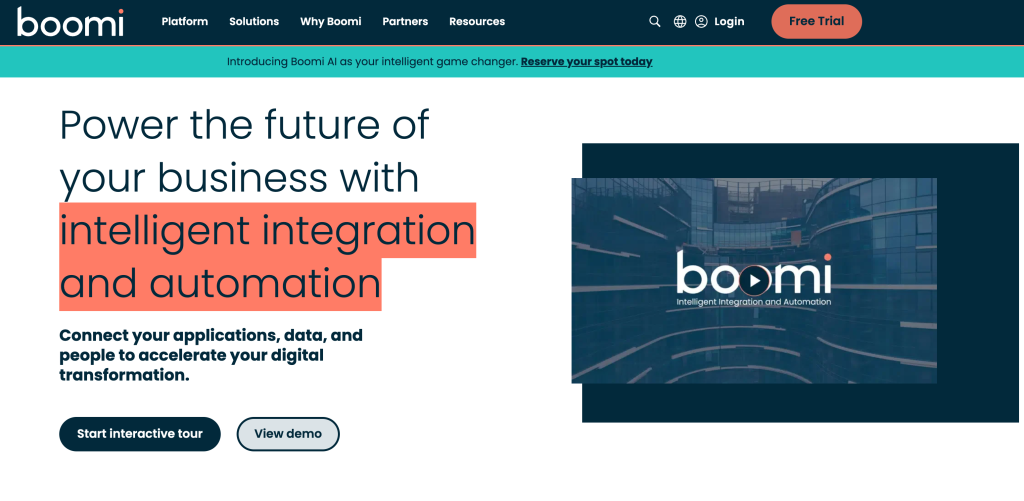
Jitterbit
Jitterbit offers a highly affordable and user-friendly iPaaS. It supports advanced workflows and various connectors. The visual drag-and-drop builder enables quick integration set up and monitoring.
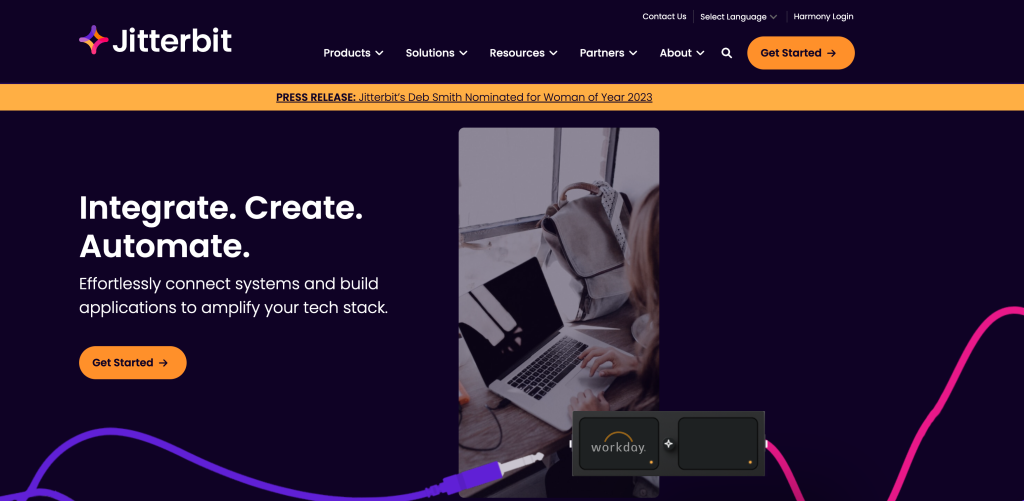
MuleSoft
MuleSoft is used by large enterprises like Netflix. Their Anypoint platform unifies APIs, connectors, and integrations. Composer allows low-code integration workflows to be built quickly.
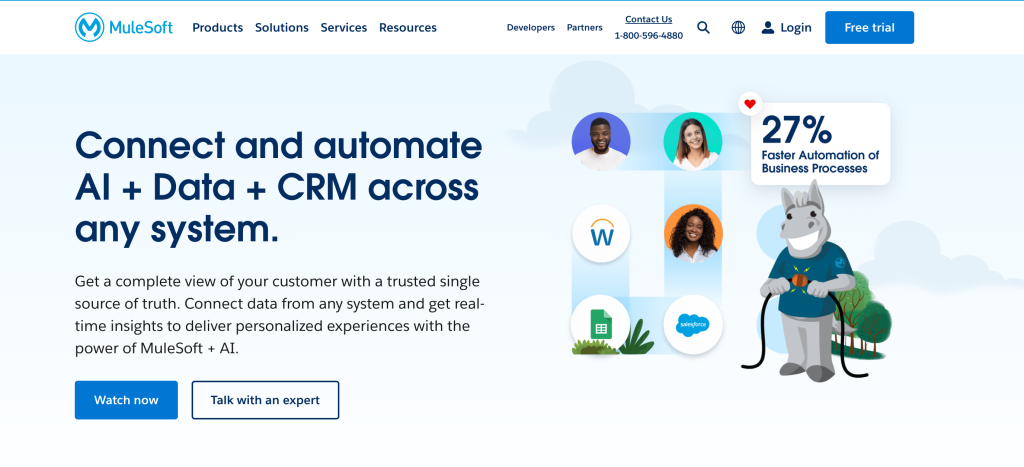
Informatica
Informatica specializes in intelligent cloud integration using AI/ML. It offers tools and pre-built integrations ideal for connecting legacy systems to the cloud.
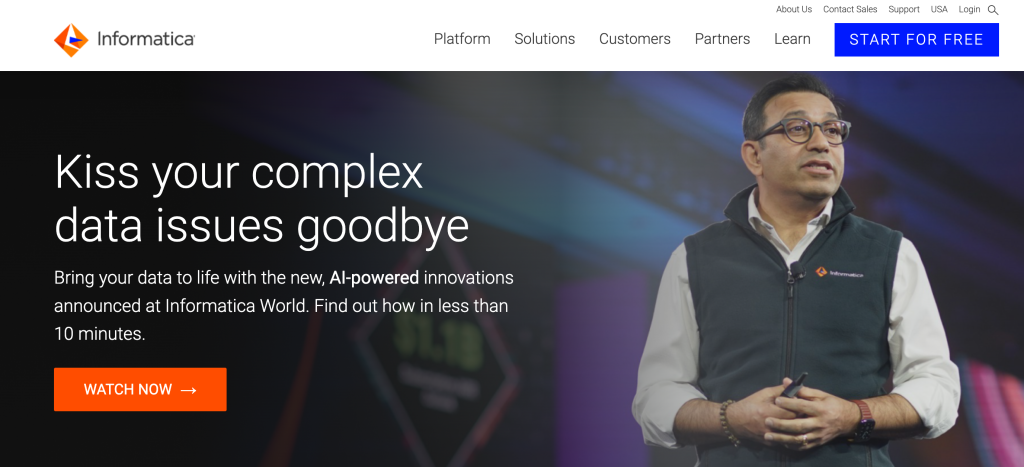
Workato
Workato provides easy-to-use iPaaS tailored for all business departments. It features template integrations, 1000+ connectors, and drag-and-drop workflows to automate processes.
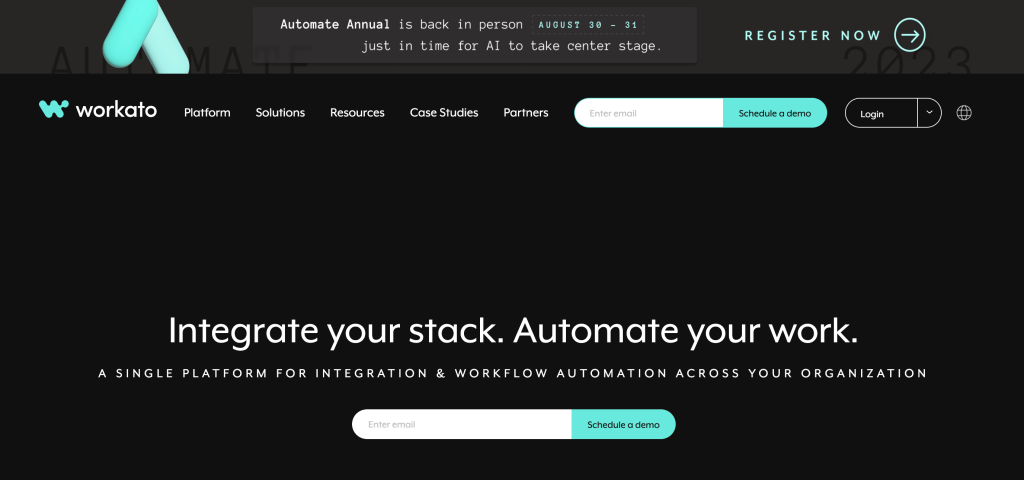
Final Thoughts
SaaS integration allows applications to communicate and share data, without human intervention. Depending on their needs, companies can choose different types of connections. They can connect two applications directly or connect different applications to a hub. They can even connect on-premise applications with cloud-based solutions.
SaaS integration can benefit businesses by increasing transparency and saving time. Improving customer experience and reducing human error are also great benefits. SaaS integration also allows for scalability, which is important for growing enterprises.
However, SaaS integration comes with its challenges. It doesn’t contribute to digital transformation and requires technical expertise. SaaS integration can be a slow process that results in SaaS sprawl.
Share This Post
Della Yang
Della Yang is a marketing professional with a passion for the ever-changing digital landscape. She frequently writes tech news and reviews, sharing her knowledge and insights through blogs and various online platforms.
Allow cookies
This website uses cookies to enhance the user experience and for essential analytics purposes. By continuing to use the site, you agree to our use of cookies.
